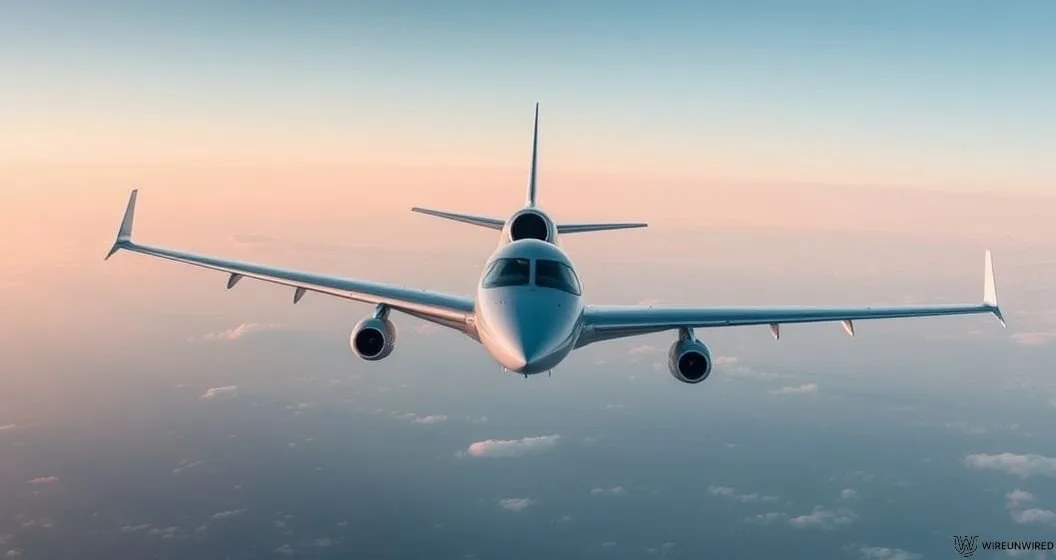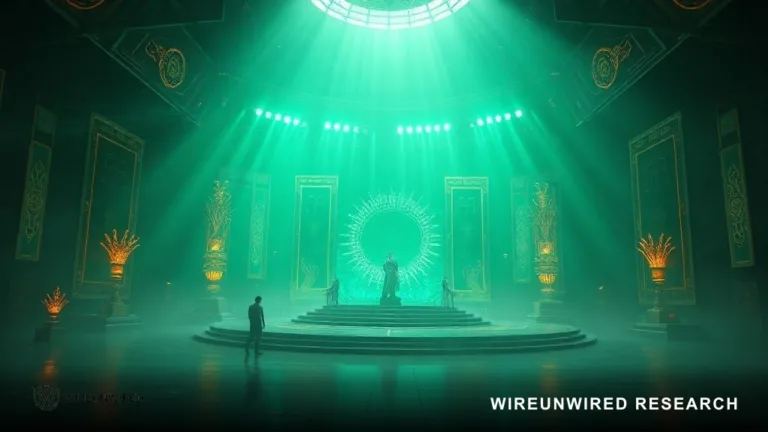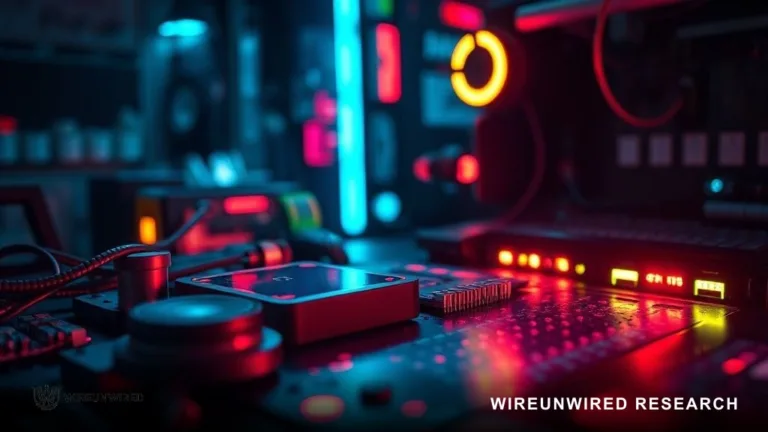Key Insights
- Russia successfully test-flew its second MC-21 aircraft built entirely with domestic components on October 28, 2025, advancing its goal of aviation self-sufficiency.
- The flight tested newly developed Russian onboard systems and PD-14 turbofan engines, with certification expected by the end of 2026.
- This milestone marks a critical step in Russia’s strategy to replace Western aircraft from Airbus and Boeing amid ongoing international sanctions.
Russia has achieved a significant milestone in its aviation industry by successfully conducting the maiden flight of its second MC-21 medium-haul passenger jet built entirely with domestically produced components. The Russian Industry and Trade Ministry announced that the aircraft took off from the airfield of the Irkutsk Aviation Plant operated by Yakovlev, a division of the United Aircraft Corporation within the state-owned Rostec conglomerate, on October 28, 2025. This development represents a crucial advancement in Russia’s efforts to establish aviation independence and reduce reliance on foreign aerospace technology, particularly in light of Western sanctions imposed following the 2022 invasion of Ukraine.
The flight tested the operation of newly developed Russian-made onboard systems and PD-14 turbofan engines, marking a departure from earlier prototypes that combined Russian and foreign components. According to Reuters reporting, this second prototype will join the certification testing program alongside the first import-substituted MC-21, which made its maiden flight on April 29, 2025. The Russian Industry and Trade Ministry shared footage of the aircraft’s flight on its official Telegram channel, showcasing the jet’s capabilities to both domestic and international audiences.
Overcoming Sanctions Through Domestic Production : The Story of MC-21
The development of the fully domesticated MC-21 aircraft comes as Russia faces significant obstacles in its aviation sector. International sanctions on foreign components have severely stalled production, while high domestic interest rates have crimped investment in the industry. These challenges have created substantial delays in Russia’s aircraft manufacturing timeline—by August 2025, the Russian aircraft industry had delivered just one of 15 jets planned for the year, highlighting the magnitude of difficulties faced in ramping up production.
The MC-21 passenger jet, designed to carry approximately 175 passengers in a two-class layout, is central to Russia’s strategy to replace jets from Western planemakers Airbus and Boeing. Russian airlines have struggled to service these Western aircraft under the sanctions regime, making the development of a viable domestic alternative critically important for the country’s aviation infrastructure. A Russian aviation source told Reuters in August that the version of the MC-21 with imported parts was lighter than the domestically produced variant, which has implications for range and fuel burn—factors that had previously made airlines cautious about the aircraft.
Join our WhatsApp group “WireUnwired Research” for the latest discussions on aviation technology and aerospace developments.
Technical Specifications and Domestic Components of MC-21
The second prototype of the import-substituted MC-21 incorporates a comprehensive suite of Russian-developed technologies. According to information from the United Aircraft Corporation, the aircraft features several sets of new Russian-made avionics equipment, including computers, navigation systems, and radio communications equipment. The jet is also equipped with a domestic auxiliary power unit, air conditioning systems, and pressure control systems—representing a near-complete replacement of previously imported components.
Perhaps most notably, the aircraft features the Aviadvigatel PD-14 engines, Russia’s domestically developed turbofan powerplant specifically designed for the MC-21 program. The first fully Russian-produced MC-21, bearing serial number 73055, also incorporated a new all-carbon fiber wing and a domestic operating system called JetOS. These technological achievements represent years of investment and development aimed at achieving 97% Russian technical content by 2022, a goal that has required substantial financial commitment from the Russian government.
The Russian government has invested heavily in the MC-21 program, with 1.6 billion roubles ($24.2 million) of additional subsidies allocated in 2019, followed by 4.11 billion roubles in 2020 and 4.81 billion roubles in 2021. The total program cost has been estimated at 438 billion rubles (US$6.6 billion), reflecting the complexity and scale of developing a modern commercial airliner with domestic components.
How the MC-21 Compares to Previous Versions and Competitors ?
| Aspect | MC-21 (2025, All-Domestic) | MC-21 (Early Models) | Western Competitors |
|---|---|---|---|
| Engines | PD-14 (Russian) | Pratt & Whitney PW1400G or PD-14 | CFM LEAP (A320neo, 737 MAX) |
| Avionics & Systems | 100% Russian | Mixed Russian/Foreign | Western |
| Certification | Expected late 2026 (Russia) | Partial (Russia/EU pending) | FAA/EASA (Global) |
| Production | Serial after 2026 | Limited | Mas |
Certification Timeline and Production Plans for Other MC-21 Prototypes
The certification process for the import-substituted MC-21 aircraft is scheduled to be completed by the end of 2026, according to Rostec CEO Sergey Chemezov. Following certification, the first two aircraft are expected to enter serial production, marking the transition from prototype development to commercial manufacturing. By August 2025, the first prototype MC-21-310 aircraft (serial number 73055) had completed 19 flights totaling 74 hours. The addition of the second prototype (serial number 73054) to the certification program in August 2025 was specifically intended to accelerate the testing process.
First deliveries of the fully domesticated MC-21 are expected at the end of 2026, with Rostec planning an ambitious production ramp-up to 36 aircraft per year by 2030. This production target represents a significant scaling challenge, particularly given the industry’s struggles to meet earlier production goals. The initial customer for the MC-21 is expected to be Aeroflot, Russia’s flagship carrier, which has been waiting for domestically produced aircraft to replace its aging fleet of Western jets that have become increasingly difficult to maintain under sanctions.
Connect with aviation professionals and enthusiasts on our LinkedIn community “WireUnwired Research” for in-depth analysis of aerospace industry developments.
Historical Context and Development Challenges
The Yakovlev MC-21 program has experienced numerous delays and setbacks since its inception. The aircraft’s first flight with Pratt & Whitney engines occurred on May 28, 2017, in Irkutsk—a brief 30-minute flight that reached only 1,000 meters altitude and 300 kilometers per hour. At that time, Russian Trade and Industry Minister Denis Manturov claimed the aircraft would have 12-15% lower operating costs than contemporary Western aircraft, generating demand for over 1,000 MC-21s between 2017 and 2037.
However, delivery dates have slipped repeatedly as the program faced technical challenges and the impact of international sanctions. Initial production steps started in 2018, with certification originally expected in late 2019 and first delivery planned for 2020. The imposition of comprehensive Western sanctions following Russia’s 2022 invasion of Ukraine fundamentally altered the program’s trajectory, forcing a complete redesign to eliminate all foreign components—a process that added years to the development timeline but has now culminated in the fully domesticated version currently undergoing certification.
The program has not been without incidents. On January 18, 2021, an MC-21-300 prototype (73051) experienced a runway excursion at Zhukovsky Aerodrome, coming to a stop in heavy snow during testing. Fortunately, there were no injuries to the crew, and the incident did not derail the overall development program.
Strategic Implications for Russian Aviation
The successful test flight of the second domestically produced MC-21 aircraft carries significant strategic implications for Russia’s aviation sector and its broader economic independence goals. The aircraft represents Russia’s most ambitious attempt to create a competitive single-aisle airliner that can serve both domestic and potentially international markets. With Russian airlines facing severe challenges in maintaining their existing fleets of Boeing and Airbus aircraft due to parts shortages and service restrictions, the MC-21 program has become essential to maintaining the country’s commercial aviation infrastructure.
The development also demonstrates Russia’s technical capabilities in aerospace engineering, despite the constraints imposed by sanctions. Creating an entirely domestic supply chain for a modern commercial aircraft—including engines, avionics, composite materials, and complex systems—represents a substantial industrial achievement. However, questions remain about the aircraft’s economic competitiveness, operational efficiency, and potential market appeal beyond Russia’s borders, particularly given the version’s reportedly higher weight compared to the original design with imported components.
As Russia continues to push forward with the MC-21 program, the aviation industry will be watching closely to see whether the domesticated version can meet performance expectations and certification requirements. The planned production ramp-up to 36 aircraft annually by 2030 will test Russia’s manufacturing capabilities and supply chain resilience. Success could provide a foundation for expanded domestic aerospace capabilities, while setbacks could further highlight the challenges of achieving aviation self-sufficiency in an interconnected global industry.
Discover more from WireUnwired Research
Subscribe to get the latest posts sent to your email.




